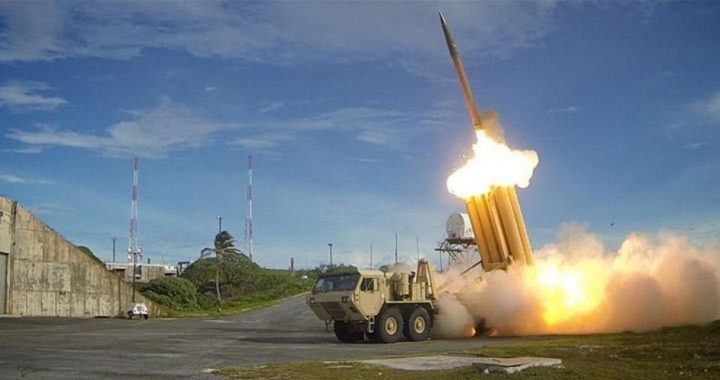
In a show of cooperation between the United States and its strongest ally in the Middle East — the State of Israel — elements of the U.S. military and the Israeli Defense Force (IDF) are deploying a Terminal High Altitude Area Defense (THAAD) system at the Nevatim airbase in southern Israel near the city of Beersheba. A March 4 press release issued by the United States European Command (EUCOM) called the deployment “a demonstration of the United States’ continued commitment to Israel’s regional security under the Department of Defense’s Dynamic Force Employment concept.”
The deployment is also meant as a demonstration to the world that the United States military is adaptable and can deploy anywhere in the world in a short time. The press release stated, “THAAD is the most advanced integrated air and missile defense system in the world, and this deployment readiness exercise demonstrates that U.S. forces are agile, and can respond quickly and unpredictably to any threat, anywhere, at any time.”
Israel already has some pretty advanced missile defenses, including the Iron Dome, which is designed to shoot down short-range rockets; the Arrow system, which intercepts ballistic missiles outside of the Earth’s atmosphere; and the David’s Sling missile defense system, which can intercept medium to long-range rockets and cruise missiles fired from 40 to 300 km.
The THAAD battery is designed to shoot down long- and intermediate-range missiles and would augment those Israeli systems. The THAAD deployment is temporary for now, and the new system will not yet be permanently integrated into Israel’s missile defenses.
Prime Minister Benjamin Netanyahu declared that the American deployment of THAAD, which is “one of the most advanced systems in the world,” affirms “the United States’ commitment to Israel’s security.”
“Together, with our defense systems, we’re even stronger [and can] handle threats, near and far, from all across the Middle East,” Netanyahu declared, adding, “Israel-U.S. ties have never been stronger. I welcome the joint drill.”
The THAAD deployment comes on the heels of a week-long cooperative exercise between 400 members of the Israeli Defense Force (IDF) and 300 U.S. troops known as Juniper Falcon, in which the armies practiced multiple scenarios in which U.S. forces were deployed to Israel to assist with missile defense operations.
Around 200 U.S. troops are participating in the current exercise. Their job will be to “work in various locations throughout Israel and will practice operational procedures for augmenting Israel’s existing air and missile defense architecture. Our service members will refine network connectivity, validate requirements for the THAAD system, and will conduct multinational training and security cooperation activities with our allies to improve interoperability and build readiness.”
The THAAD system is being deployed out of the 11th Air Defense Artillery Brigade, 32nd Army Air and Missile Defense Command (AAMDC) stationed at Fort Bliss, Texas. The deployment is expected to last a month.
Officially, the deployment is unrelated to rising tensions between Israel and Iran, though many believe that it is a message to Iran, which is reportedly developing new and more technically advanced missiles. Earlier this year, Israel blasted Iranian military targets located in Syria in retaliation for a Damascus-based Iranian rocket attack into Northern Israel. Existing Israeli missile defenses were able to intercept the missile.
The temporary deployment is, however, a clear message to Iran, a country that is openly hostile to both the United States and Israel, that both countries are being watchful of events in the region and are ready to respond should Iran escalate its military activities in the region.
In the sending-mixed-signals department, the United States is also selling $110 billion worth of the same THAAD equipment to Saudi Arabia, which has no official diplomatic relationship with Israel. At a glance, it seems as if the United States is playing both sides of Middle Eastern politics.
But Saudi Arabia has also been extremely critical of Iran and its attempts to project power throughout the Middle East. The two Islamic countries have had no diplomatic relations since a 2016 attack on Saudi Arabia’s embassy in Tehran. Though Iran’s President Hassan Rouhani and Supreme Leader Ali Khamenei publicly condemned the attack, Saudi Arabia considered the Iranian government complicit in it.
So, the enemy of my enemy is my friend, I guess.
Photo: U.S. Army




